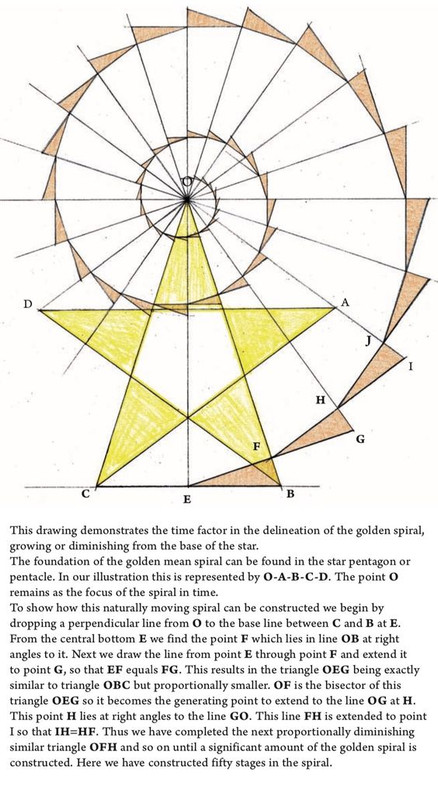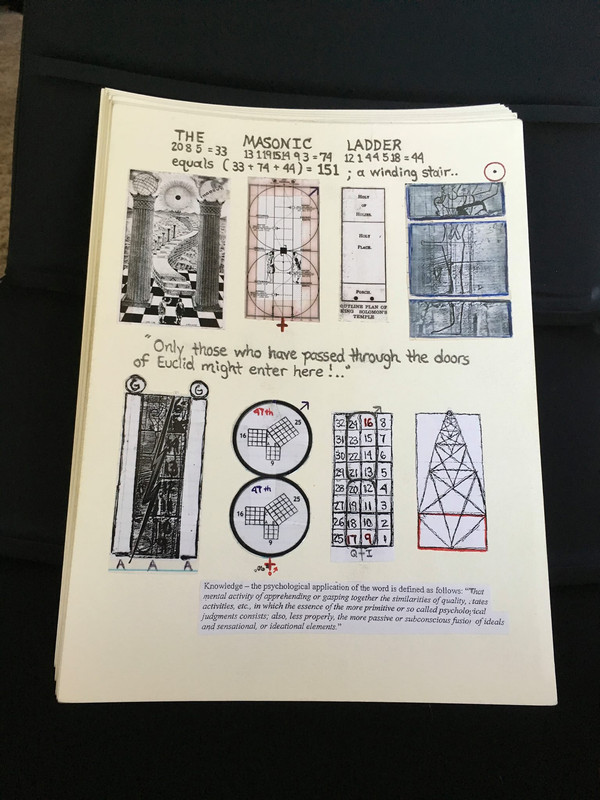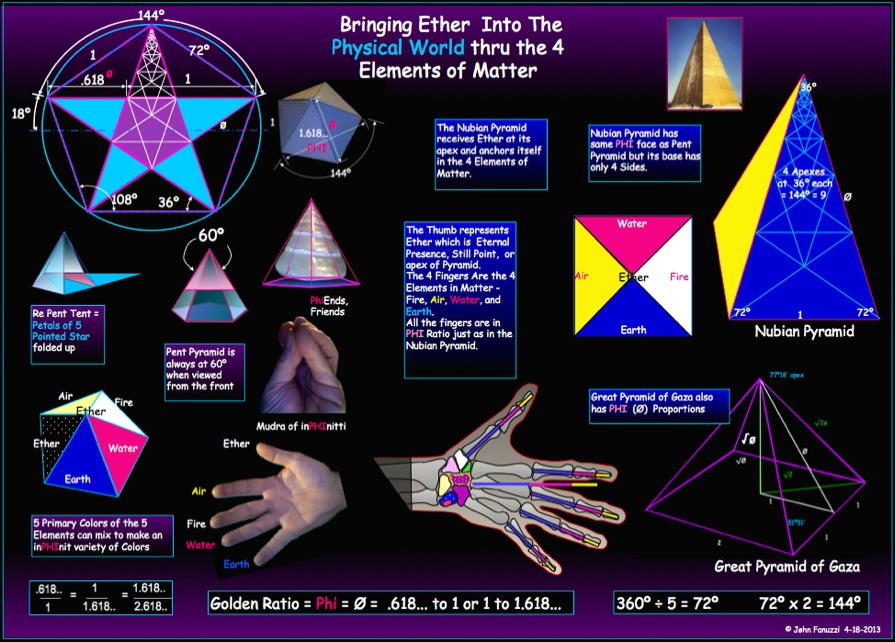The lute of Pythagoras is a self-similar, kite-shaped geometric figure made from a sequence of pentagrams.
This is a collection of information on the Lute of Pythagoras and its connection to the number 5 and the Golden Ratio.

Source: https://www.researchgate.net/figure/8-The-golden-triangle-of-a-pentagram-Pythagorean-lute-and-logarithmic-spiral_fig2_364332219












The following is OCR text and may contain errors. Original source image pictured above.
Encyclopedia of freemasonry and its kindred sciences, comprising the whole range of arts, sciences and literature as connected with the institution by Mackey, Albert Gallatin, 1807-1881
Publication date 1916
https://archive.org/details/encyclopediaoffr02mack/mode/2up
Pentacle, The. The pentaculum Salomonis,” or magical pentalpha, not to be confounded with Solomon’s seal. The pentacle is frequently referred to in Hermetic formulae.
Pentagon. A geometrical figure of five sides and five angles. It is the third figure from the exterior, in the camp of the Sublime Princes of the Royal Secret, or Thirty-second Degree of the Scottish Rite. In the Egyp- tian Rite of Caghostro, he constructed, with much formality, an implement called the “sacred pentagon,’' and which, being dis- tributed to his disciples, gave, as he affirmed, to each one the power of holding spiritual intercourse.
Pentagram. From the Greek penfe, five, and gramma, a letter. In the science of magic the pentalpha is called the holy and mys- terious pentagram. Eliphas Levi says {Dog. et Rituel de la Haute Magie, ii., 55) that the pentagram is the star of the Magians; it is the sign of the word made flesh; and accord- ing to the direction of its rays, that is, as it points upward with one point or with two, it represents the good or the evil principle, order or disorder; the blessed lamb of Ormuzd and of St. John, or the accursed god of Men- des; initiation or profanation; Lucifer or Vesper; the morning or the evening star; Mary or Lilith; victory or death; fight or darkness. (See Pentalpha.) Pentalpha. The triple triangle, or the pentalpha of Pythagoras, is so called from the Greek irerre. pente, five, and a\(pa, alpha, the letter A, oecause in its configuration it presents the form of that letter in five different positions. It was a doctrine of Pythagoras, that all things proceeded from numbers, and the number five, as being formed by the union of the first odd and the first even, was deemed of peculiar value; and hence Cornelius Agrippa says {Philos. Occult.) of this figure, that, “by vir- tue of the number five, it has great command over evil spirits because of its five double triangles and its five acute angles within and its five obtuse angles without, so that this interior pentangle contains in it many great mysteries.” The disciples of Pythagoras, who were indeed its real inventors, placed within each of its interior angles one of the letters of the Greek word 'TriElA, or the Latin one SALUS, both of which signify health; and thus it was made the talisman of health. They placed it at the beginning of their epistles as a greeting to invoke secure health to their correspondent. But its use was not confined to the disciples of Pythago- ras. As a talisman, it was employed aU over the East as a charm to resist evil spirits. Mone says that it has been found in Egypt on the statue of the god Anubis. Lord Brougham says, in his Italy, that it was used by Antiochus Epiphanes, and a writer in Notes and Queries (3 Ser., ix., 511) says that he has found it on the coins of Lysimmachus. On old British and Gaulish coins it is often seen beneath the feet of the sacred and mythical horse, which was the ensign of the ancient Saxons. The Druids wore it on their sandals as a symbol of Deity, and hence the Germans call the figure “ Druttenfuss,” a word originally signifying Druid's foot, but which, in the gradual corruptions of language, is now made to mean Witche’s foot. Even at the present day it retains its hold upon the minds of the common people of Germany, and is drawn on or affixed to cradles, thresholds of houses, and stable-doors, to keep off witches and elves. The early Christians referred it to the five wounds of the Savior, because, when properly inscribed upon the representation of a human body, the five points will respec- tively extend to and touch the side, the two hands, and the two feet. The Medieval Masons considered it a symbol of deep wisdom, and it is found among the architectural ornaments of most of the ecclesiastical edifices of the Middle Ages.
But as a Masonic symbol it pecuharly claims attention from the fact that it forms the outhnes of the five-pointed star, which is typical of the bond of brotherly love that unites the whole Fraternity. It is in this view that the pentalpha or triple triangle is referred to in Masonic symbohsm as representing the intimate union which existed between our three ancient Grand Masters, and which is commemorated by the hving pentalpha at the closing of every Royal Arch Chapter.
Many writers have confounded the pen- talpha with the seal of Solomon, or shield of David. This error is almost inexcusable in Ohver, who constantly commits it, because his Masonic and archeological researches should have taught him the difference, Solomon’s seal being a double, interlaced triangle, whose form gives the outhne of a star of six points.














No comments:
Post a Comment
Note: Only a member of this blog may post a comment.